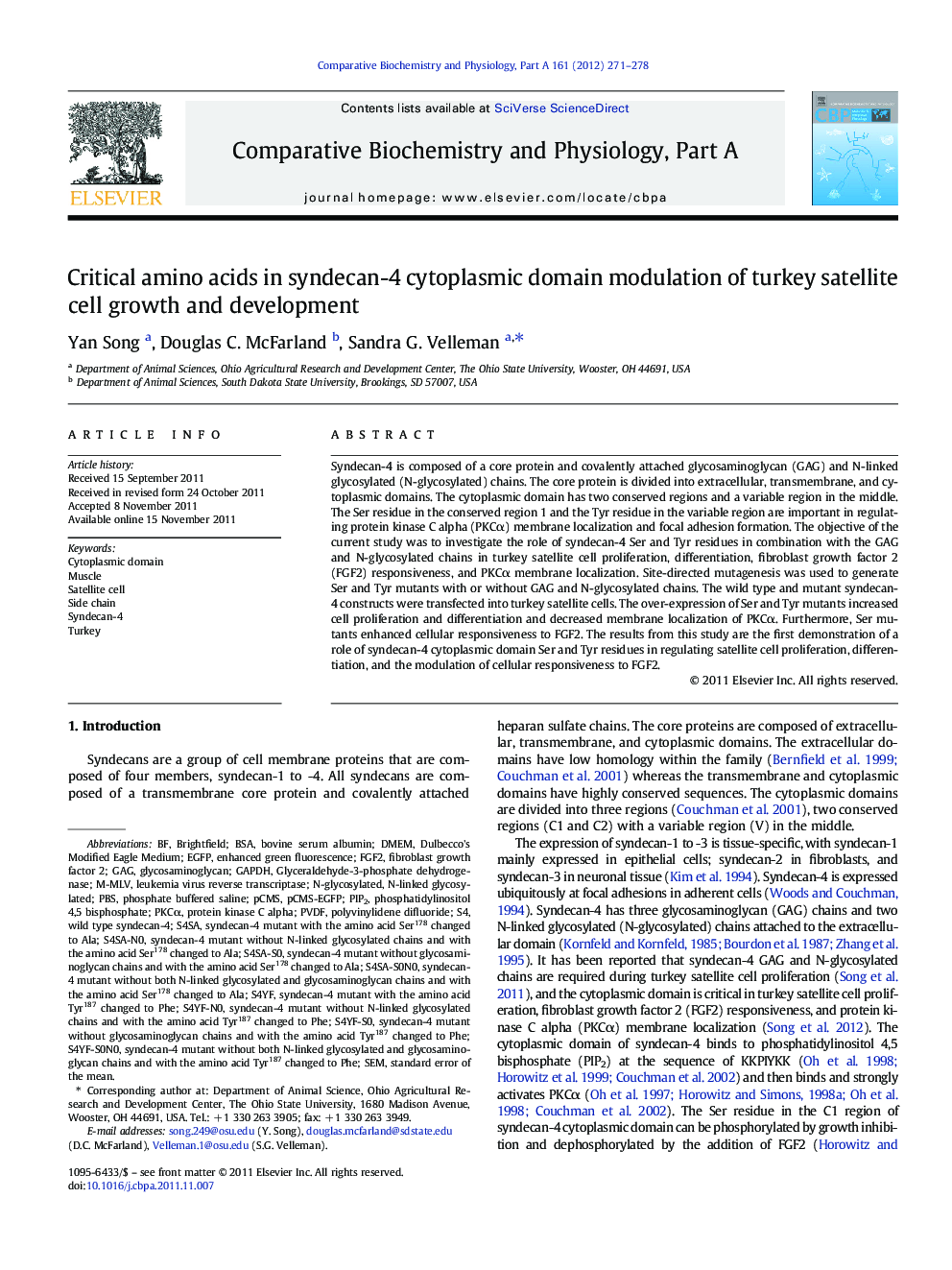| Article ID | Journal | Published Year | Pages | File Type |
|---|---|---|---|---|
| 1972693 | Comparative Biochemistry and Physiology Part A: Molecular & Integrative Physiology | 2012 | 8 Pages |
Syndecan-4 is composed of a core protein and covalently attached glycosaminoglycan (GAG) and N-linked glycosylated (N-glycosylated) chains. The core protein is divided into extracellular, transmembrane, and cytoplasmic domains. The cytoplasmic domain has two conserved regions and a variable region in the middle. The Ser residue in the conserved region 1 and the Tyr residue in the variable region are important in regulating protein kinase C alpha (PKCα) membrane localization and focal adhesion formation. The objective of the current study was to investigate the role of syndecan-4 Ser and Tyr residues in combination with the GAG and N-glycosylated chains in turkey satellite cell proliferation, differentiation, fibroblast growth factor 2 (FGF2) responsiveness, and PKCα membrane localization. Site-directed mutagenesis was used to generate Ser and Tyr mutants with or without GAG and N-glycosylated chains. The wild type and mutant syndecan-4 constructs were transfected into turkey satellite cells. The over-expression of Ser and Tyr mutants increased cell proliferation and differentiation and decreased membrane localization of PKCα. Furthermore, Ser mutants enhanced cellular responsiveness to FGF2. The results from this study are the first demonstration of a role of syndecan-4 cytoplasmic domain Ser and Tyr residues in regulating satellite cell proliferation, differentiation, and the modulation of cellular responsiveness to FGF2.
